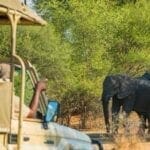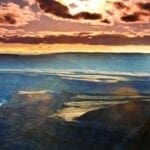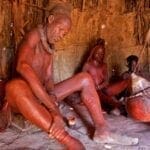Luderitz is a small harbor town on the Atlantic coastline in Southern Namibia, just below the Namib Desert. This colorful town with its German architecture is a gateway to a number of ‘off the beaten track’ adventures in Namibia; such as Sperrgebiet National Park including Kolmanskop, and the wild desert horses of Garub.
Shark Island was the site of a concentration camp harboring Nama and Herero prisoners between 1905 to 1907. It has since been connected to the mainland; so it is actually now a peninsula. There are several monuments on Shark Island in memory of this troubling time in the history of Namibia. It offers a great view of Luderitz town and harbor.
Diaz Point is where Bartholomew Diaz first landed in Southern Africa and erected a cross for Apostle St. James in July 1488. There is a replica of the cross, a lighthouse, and excellent views. You’ll be able to take an excursion by boat to Halifax Island to view the Jackass Penguin colony from the boat. Fur seals and dolphins often swim alongside the boat.
Grosse Bucht or Grusse Bucht (Big Bay) is a wild and scenic beach favored by flocks of flamingos. There is also a small but picturesque shipwreck on the beach. Just a few kilometers up the coast is Bognefels Arch; a small rock arch beside the sea.
Kite surfing is becoming a popular activity in Luderitz.
Lüderitz is on the B4 national road to Keetmanshoop; making it an ideal add-on if you are driving from Cape Town or visiting the Fish River Canyon.
Sperrgebiet National Park
After the discovery of diamonds in 1908, a 100km wide stretch of land between Lüderitz and the Orange River mouth; was declared a “Sperrgebiet”. “Sperrgebiet” is a “forbidden territory”. Diamonds were lying on the desert floor like apples under an apple tree. This resulted in one of the largest diamond rushes in human history. The diamonds have since all dried up so the government decided to open the Park up for limited tourism.
Sperrgebiet is 26 000 km²; making it Africa’s second-largest protected area. The National Park protects the ecology of the globally important Succulent Karoo. Home to 2439 endemic plants, world conservationists have classified this area as one of the world’s top 34 biodiversity hotspots.
Kolmanskop
Kolmanskop is an old diamond mining town that is well worth a visit, and only 12 km from Luderitz. Once this town had elaborate homes and old recreation facilities; even a casino, bowling alley, and a theatre. It is now a ghost town. Today, Kolmanskop has been partially restored as a tourist attraction, and the sight of decrepit buildings being invaded by the sand from the Namib Desert is simply too surreal to describe.
As Kolmanskop is in a restricted area, Sperrgebiet; permits need to be obtained to visit. Guided Tours are available; else feel free to walk around exploring on your own. If you get there early enough, photographers can get great photos. We recommend getting a photographer’s permit in Luderitz the day before. This will allow you to get in early when the light is still good.
Wild Desert Horses at Garub
There are many theories about where these feral horses originate from, but they hold an irresistible fascination for all. Dramatic, yet often dreamlike; these free creatures are a photographer’s dream when playing or fighting. Their habitat, the barren plains around Garub; is a paradise only in so far as it is beautiful, but it is not bountiful! Nevertheless; they have managed to adapt to the harsh conditions over many generations. Their need for water is reduced to drinking every 2nd or 3rd day; while their digestive system has adapted to absorb the maximum of nutrients from the sparse vegetation found in the area.
They can be found about 20km west of Aus; just outside Garub; where a watering hole has been constructed for the horses. Horses, gemsbok (oryx), and ostriches often frequent this oasis; and seeing all three in the same space is truly a magical experience!
























